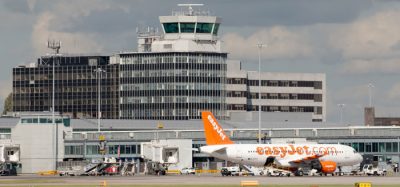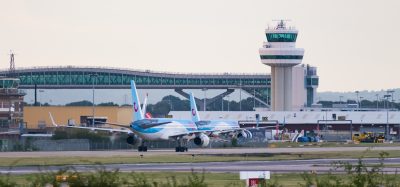ACI Europe data for H1, Q2 and June 2020 shows devastating impact of COVID-19
- Like
- Digg
- Del
- Tumblr
- VKontakte
- Buffer
- Love This
- Odnoklassniki
- Meneame
- Blogger
- Amazon
- Yahoo Mail
- Gmail
- AOL
- Newsvine
- HackerNews
- Evernote
- MySpace
- Mail.ru
- Viadeo
- Line
- Comments
- Yummly
- SMS
- Viber
- Telegram
- Subscribe
- Skype
- Facebook Messenger
- Kakao
- LiveJournal
- Yammer
- Edgar
- Fintel
- Mix
- Instapaper
- Copy Link
Posted: 7 August 2020 | International Airport Review | No comments yet
ACI Europe’s data outlines a decline of 93.2 per cent across the European airport network during June 2020, with recovery already slowing down.


ONE AIRSPACE: The Single European Sky project has been developed since 2000
Airports Council International (ACI) Europe has published its air traffic report for June 2020, Quarter 2 (Q2) and the First Half (H1) of 2020, as well as an interim update for July 2020.
The report reveals the devastating impact of the COVID-19 pandemic on Europe’s airports, with passenger traffic decreasing by 64.2 per cent during the first half of 2020 and almost coming to complete standstill in the second quarter, with a drop of 96.4 per cent, compared to the same period in 2019.
Non-European airports have been less impacted due to domestic traffic
Over the first half of the year, the decrease in passenger traffic was slightly less pronounced in the non-European Union (EU) market (a decrease of 59.8 per cent) than in the EU (a fall of 65.6 per cent). This mostly reflected less stringent lockdowns in several non-EU countries and domestic air services being less affected than international ones.
While passenger volumes on international routes decreased at a similar pace at non-EU and EU airports (65.1 per cent and 65.4 per cent, respectively), the decrease on domestic routes was less acute at non-EU airports (50.7 per cent) than at EU ones (62.9 per cent). That was the case in particular for airports in Russia, Norway and, to a lesser extent, Turkey.
Europe’s airport rankings have been heavily disrupted
During the month of June 2020 – which saw passenger traffic across the European airport network falling by 93.2 per cent – Moscow Domodedovo Airport (DME) became the busiest European airport, with 716,800 passengers (a decrease of 73.3 per cent, compared to 2019).
Domodedovo Airport was then followed by:
- Paris-Charles de Gaulle Airport (CDG) – 625,900 passengers, representing a fall of 90.9 per cent
- Sheremetyevo International Airport (SVO) – 622,800 passengers, representing a fall of 86.5 per cent
- Frankfurt Airport (FRA) – 599,200 passengers, representing a fall of 90.9 per cent
- Istanbul Airport (IGA) – 591,000 passengers, representing a fall of 90.1 per cent.
London Heathrow Airport (LHR), which normally holds the top spot, fell to the 11th position, handling just over 350,700 passengers, compared to 7.24 million in June 2019 (a decline of 95.2 per cent). Amsterdam Airport Schiphol (AMS), the 3rd busiest European airport in 2019, came down to the 7th position (471,800 passengers, a decline of 92.7 per cent).
UK airports are falling behind
June 2020 also saw UK airports significantly trailing their peers due to the overtly restrictive travel restrictions enacted by the UK government. Apart from Heathrow Airport, other UK airports falling in the European ranking included:
- London Gatwick Airport (LGW) – fell from the 10th position in June 2020 to the 92nd position, experiencing a decline of 99.4 per cent in passenger numbers
- Manchester Airport (MAN) – fell from the 18th position to the 73rd position, experiencing a decline of 98.6 per cent in passenger numbers
- London Stansted Airport (STN) – fell from the 24th position to the 59th position, experiencing a decline of 97.8 per cent in passenger numbers
- Birmingham Airport (BHX) – fell from the 48th position to the 125th, experiencing a decline of 98.9 per cent in passenger numbers
- Newcastle International Airport (NCL) – fell from the 93rd position to the 170th, experiencing a decline of 99.1 per cent in passenger numbers.
Recovery is slowing down across Europe
Following the tentative coordination of the lifting of travel restrictions at the EU level as of mid-June 2020, the traffic recovery has been slower than expected. As a result, passenger traffic across the European airport network still declined by 78 per cent in July 2020, compared to the same month in 2019. This translated into an additional 208 million passengers lost, bringing the total passenger loss since the start of the year to 969 million.
Since the last few weeks of July 2020, the pace of the recovery has further slowed down. This is due to several states re-imposing travel restrictions – in particular, the abrupt decision by the UK government to require travellers from Spain to quarantine upon entry to the UK.
Olivier Jankovec, Director General of ACI Europe, commented: “The recovery is far too slow-paced and uncertain. Despite desperate efforts to trim down their costs, Europe’s airports are burning cash at the height of the summer. Revenues are weak because of the combination of low volumes with rebates and incentives to airlines to attract and incentivise air traffic. Considering the seasonality of demand, this does not bode well for the coming months. If the recovery does not accelerate significantly, many airports will simply run out of money.”
Related topics
Related airports
Amsterdam Airport Schiphol (AMS), Birmingham Airport (BHX), Frankfurt Airport (FRA), Istanbul Airport (IST), London Gatwick Airport (LGW), London Heathrow Airport (LHR), London Stansted Airport (STN), Manchester Airport (MAN), Moscow Domodedovo Airport (DME), Moscow Sheremetyevo International Airport (SVO), Newcastle International Airport (NCL), Paris Charles de Gaulle Airport (CDG)


















